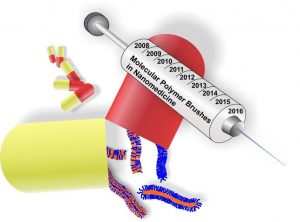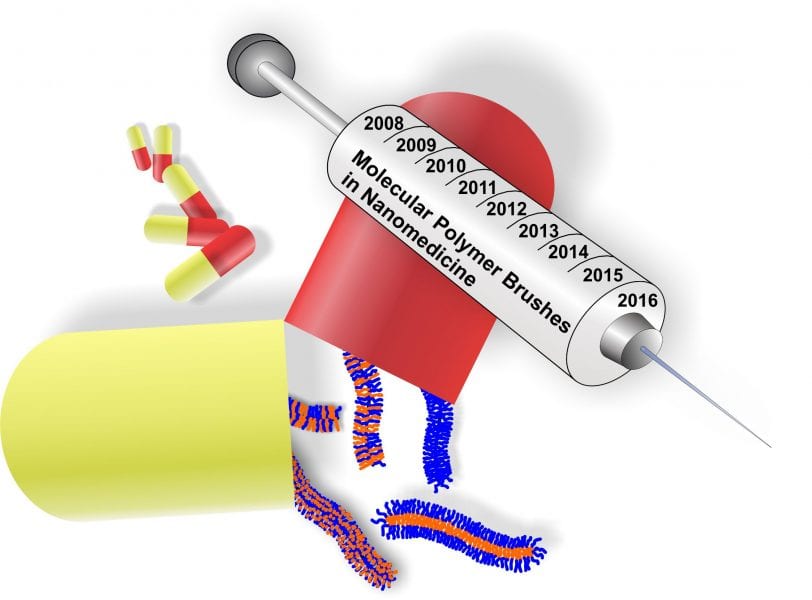 Nanomedicine is one of the fastest growing areas of nanotechnology. Scientists apply nanotechnology concepts to solve ongoing issues in prevention, treatment and diagnosis of common diseases.
Nanomedicine is one of the fastest growing areas of nanotechnology. Scientists apply nanotechnology concepts to solve ongoing issues in prevention, treatment and diagnosis of common diseases.
Within this field, polymeric nanoparticles are hot contenders to deliver novel and modular solutions to overcome these issues. Among widely used polymer nanoparticles, such as micelles and polymersomes, elaborate polymer architectures are attracting increasing interest.
Molecular polymer brushes, also known as cylindrical polymer brushes or molecular bottlebrushes, are particularly intriguing. Despite being only one giant macromolecule, these molecular heavyweights can easily adopt the size of colloids. This places these unique polymer constructs in a niche between nanoparticles and polymer coils.
Throughout the past decade, these remarkable materials have witnessed an ever-growing interest from many disciplines. The modular build-up of molecular polymer brushes allows for tailoring size and composition simply via polymerisation. Thus, these materials are very appealing in addressing problems where precise tuning of functionality and physicochemical properties is of high importance. Originally considered a molecular playground predominately for synthetic polymer chemists; nowadays, these elaborate nano-constructs find application in many fields of science and engineering.
In a recent Talent article, polymer researcher Markus Müllner from the Key Centre for Polymers and Colloids in the School of Chemistry at The University of Sydney highlights the diverse application of molecular polymer brushes in nanomedicine.
The article briefly describes the architecture, composition and synthesis routes towards molecular polymer brushes, before discussing the latest and future applications of these nanostructures in drug, gene and peptide delivery as well as their use as imaging probes. These brush nanoparticles can be assembled to superstructures, similar to block copolymers. Alternatively, they may also be directly used as unimolecular carriers.
Talent articles in Macromolecular Chemistry & Physics showcase the research of bright young scientists in polymer science. Outstanding researchers in the first years of their independent academic positions are invited to introduce the new concepts they are working on.
Interested in Talent articles? Click HERE to find more.

















